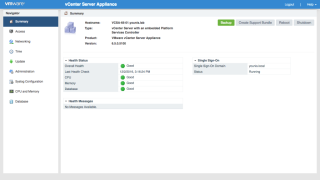Upgrading to vCenter Server 6.7 – New Feature Walkthroughs Available
Upgrading to vCenter Server 6.7 – New Feature Walkthroughs Available
We are proud to announce we have two new feature walkthroughs available which cover the vCenter Server upgrade from vSphere 6.5 to vSphere 6.7. Introduction Located on our vSphere Central site we have created two new feature walkthroughs focused on upgrading your vCenter Server from version 6.5 to version 6.7. The first walkthrough covers Upgrading The post Upgrading to vCenter Server 6.7 – New Feature Walkthroughs Available appeared first on VMware vSphere Blog.













